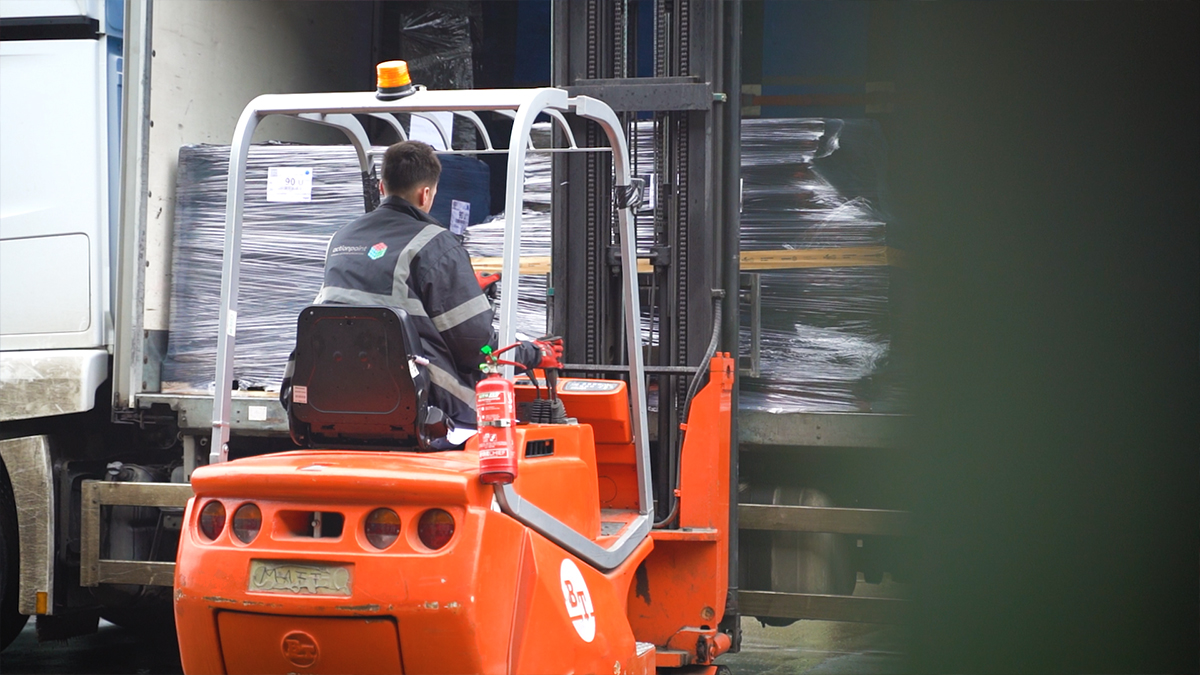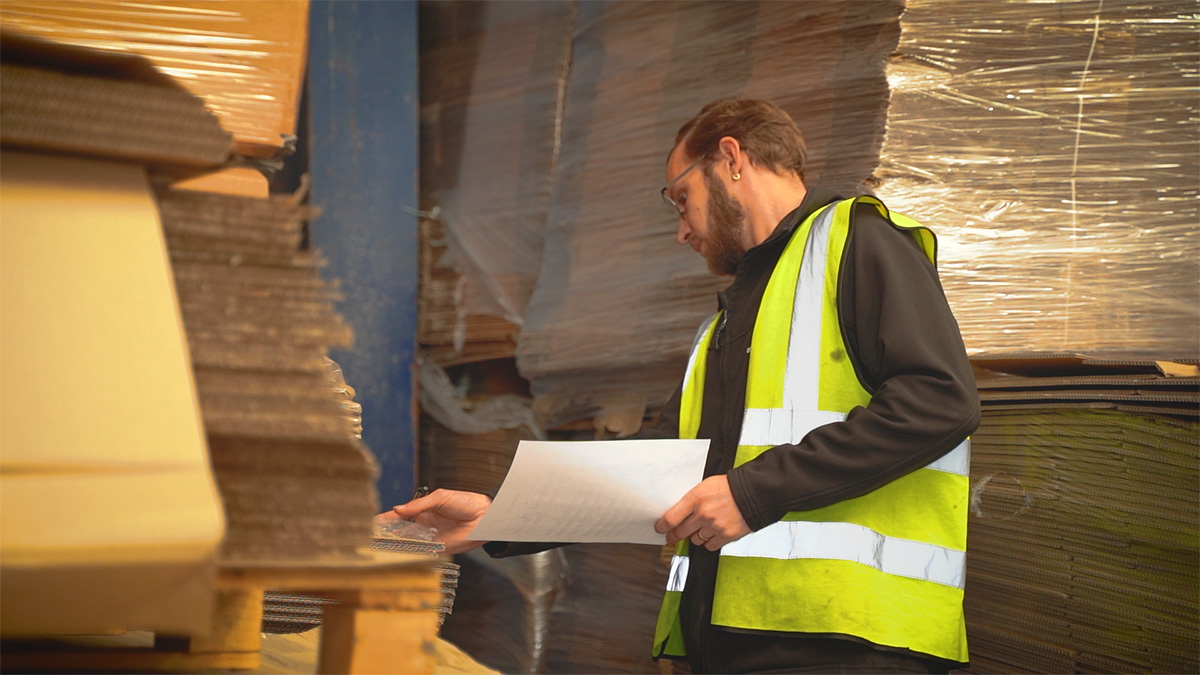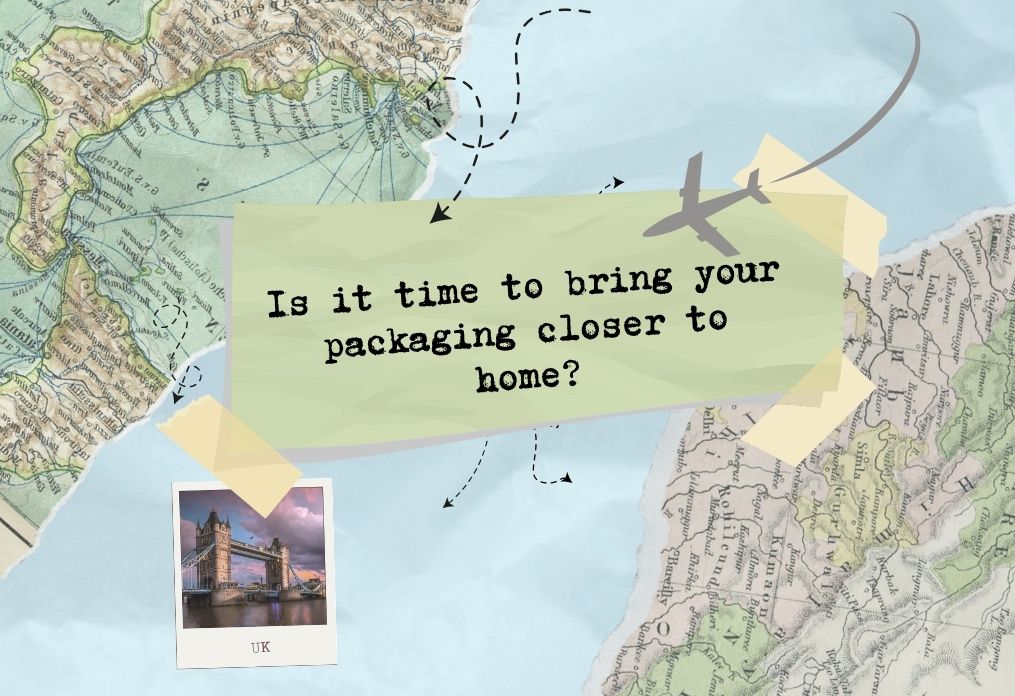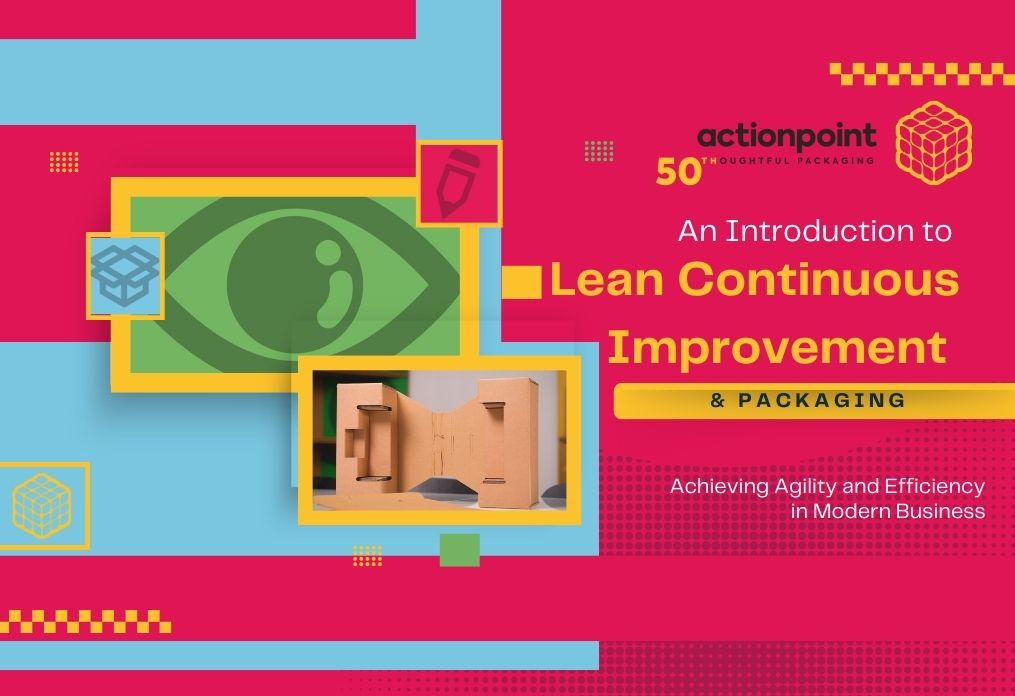As we edge closer to the introduction of fees for Extended Producer Responsibility for packaging, this blog gives you an update on EPR, related schemes, and the latest timeline of activity.
Quick reminder, what is EPR?
EPR was introduced as part of the UK Government’s Resources and Waste Strategy to increase resource efficiency, reduce waste, and move towards a circular economy. Other key measures in the Strategy include the 2022 launch of the Plastic Packaging Tax and bans on single-use plastic products such as straws, plates, and cutlery. Added to this are the Government’s plans to launch a nationwide Deposit Return Scheme and a Simpler Recycling initiative.
Under EPR legislation, packaging producers will have to pay the full cost of dealing with their packaging when it becomes household waste. At first, fees will be based on material type and weight. In future, they will also consider recyclability of the materials, with higher rates for unrecyclable or hard to recycle packaging. The fees will raise the necessary funding to collect and process/recycle the waste, as well as encourage producers to use less packaging, and to use more recyclable materials.
Off the back of EPR, packaging producers are expected to reconsider their packaging choices – but don’t forget your labels. From 31st March 2026, all packaging (except for plastic films and flexibles) is to be labelled ‘Recycle’ or ‘Do not recycle,’ to make it easier for consumers to dispose of their packaging waste responsibly. Note that biodegradable/compostable plastic packaging materials will not be collected separately. Government guidance remains to label these items ‘Do not recycle’ and place them in the rubbish bin to avoid contaminating recycling streams.

Who does EPR affect?
EPR references “packaging producers”, but what does that mean exactly? This term refers to individual businesses, subsidiaries, and groups (excluding charities) that:
- Place goods into packaging
- Import packaging (filled/unfilled)
- Own an online marketplace (allowing companies outside of the UK to sell goods/packaging e.g. Amazon)
- Hire or loan out reusable packaging
- Supply empty packaging
What happens next depends on whether the business is classed as a large or small organisation. Remember that any data reporting or payment of fees will relate to packaging supplied or imported into the UK – exports are exempt.
Large organisations
A large producer is defined as one that has an annual turnover of £2million+ and handles 50+ tonnes of packaging. They are required to submit packaging data reports every 6 months, pay an EPR registration fee and EPR waste management costs, and buy Packaging Waste Recycling Notes (PRNs). Large producers should enrol on the Government’s Report Packaging Data service by 31st May 2024. For those using a compliance scheme, your deadline date will be much earlier to give the scheme time to submit the EPR data on your behalf. Authorised compliance schemes are very useful as they can pay a company’s EPR registration fees, get PRNs to meet recycling obligations, and report packaging data – however, they can’t make your EPR waste management fee payments.
Small organisations
There are two definitions of a small producer:
- An annual turnover of £1m+ and handles 25-50 tonnes of packaging OR
- An annual turnover of between £1m-£2m and handles 25 tonnes+ of packaging
Small producers are required to collect 2023 packaging data but not report it. They will have to submit a data report every year, beginning with the submission of their 2024 packaging data. Small producers will also pay an annual registration fee to the EPR Scheme Administrator but will not have to purchase PRNs nor pay EPR waste management fees.
Packaging data to collect
The packaging data you supply will be used to work out your waste management fee and your recycling obligations. Required information comes under the following headings: packaging activity, packaging type, packaging class, packaging material and weight, and nation data.
1. Packaging activity categories (how you put your packaging on the market)
- Supplied under your brand
- Packed or filled unbranded packaging (your own/other companies’ goods)
- Imported (or as ‘first UK owner’)
- Supplied as empty to sell to other organisations
- Hired or loaned e.g. tote boxes, pallets (but only report on it the first time it is supplied)
- Supplied through an online marketplace you own selling filled/unfilled packaging from non-UK businesses into the UK
- Supplied filled/unfilled packaging to end user (for nation data reporting only – see point 5 below)
2. Packaging type categories (what type of waste it will become)
Small organisations only need to collect two types of data: (1) total packaging weight in kilograms excluding drinks containers, and (2) drinks containers. Large organisations on the other hand must identify their packaging as:
- Household (all primary and shipment packaging unless going direct to a business that is the end user. Do not include items here that you report under the ‘litter bins’ or ‘drinks containers’ categories)
- Non-household (all secondary and tertiary packaging, or packaging going direct to a business that is the end user. You need evidence of this and to retain it for 7 years)
- Commonly ends up in public litter bins (such as takeaway/ready to eat food and drink, sweets, crisps, and tobacco)
- Drinks containers (you’ll need to submit both weight in kilograms and number of units. For 2023 data, only include containers supplied in England, Wales, and Northern Ireland)
- Reusable (primary/non primary packaging. Only report the first time it is supplied)
- Becomes self-managed waste (not commonly collected by local authorities such as plastic bag collection points in supermarkets, or organisation waste you remove from site, or reusable/refillable packaging waste. Anything you report here may be used to off-set your household packaging and reduce your waste management fee.)

3. Packaging class categories
- Primary (a single sales unit or multipack)
- Secondary (several units for selling/shipping/display purposes)
- Shipment (added to primary packaging to ship single/multiple units to businesses/consumers)
- Tertiary (to group secondary packaging units together for transportation. Tertiary packaging excludes road, rail, ship, and air containers)
4. Packaging material and weight
Material categories are Aluminium, Fibre-based composite, Glass, Paper/cardboard, Plastic, Steel, Wood, and Other (such as bamboo, ceramic, copper, cork, hemp, rubber, silicone). Each material type under ‘other’ must be reported separately. Weight should be given in kilograms. Composite/multi-material packaging is made of two or more layers of different materials and cannot be separated by hand. For this type of packaging, select the category that matches the main material and include the full weight of the packaging.
5. Nation data
Some organisations will have to supply nation data explaining which country in the UK the packaging was sold, hired, loaned, gifted, and discarded. This includes importers, online marketplace owners, service providers, distributors, and sellers. The deadline for nation data for packaging supplied in 2023 is 1st December 2024.
Where does Simpler Recycling fit in?
In October 2023, the Government announced its Simpler Recycling scheme (previously known as Consistency in Recycling), which it described as a “common-sense” approach to recycling. The idea is that no matter where you are, you will be able to recycle the same materials. From 31st March 2026, all local authorities will be required to collect paper and card, glass, metal, plastic, food waste, and garden waste. The same waste streams apply to non-household premises (such as business, schools, and hospitals) with the exception of garden waste.
This means manufacturers will be able to design packaging that can be recycled across the nation.
And what about the UK’s Deposit Return Scheme?
In 2018, the Government committed to the delivery of a UK-wide Deposit Return Scheme (DRS) for single-use drinks containers. Since then, there have been two consultations on the scheme’s design, scope, and delivery. DRS will work by charging consumers a deposit for certain types and sizes of drinks bottles and cans, which they get back when they take the empty packaging to a DRS collection point.
Drinks containers are currently captured under the 2007 packaging waste regulations, with producers contributing towards the cost of recycling and recovery from households. They are also included under the new EPR reforms, but DRS offers an alternative approach as it works in a slightly different way. Under DRS, the materials are more likely to be returned rather than littered (or taken home to become household waste). This would help to increase recycling rates and, as the materials would be collected separately, would save sorting time, prevent contamination of recycling, and enhance the quality of recyclate and recycled materials.
The DRS will be an industry-led scheme that is managed by a Deposit Management Organisation (DMO) appointed this year. Producers (brand owners and drinks manufacturers) will be required to pay a registration fee and report data to the DMO.
The Scottish Government is developing its own DRS, while England, Wales, and Northern Ireland have been developing joint proposals. For now, the rollout date for all of them is October 2025. However, it is possible that DRS will get postponed once again. All schemes will include steel and aluminium cans and plastic PET (polyethylene terephthalate) bottles, but there is disagreement over the inclusion of glass. Wales and Scotland being in favour of it, while England and Northern Ireland are against.

EPR & related schemes timeline
2023
1st October: Large producers to submit their 1st EPR packaging data reports (Jan to Jun 23). See also 31st May 2024 deadline.
2024
4th January: Defra announces Dr Margaret Bates appointed as Head of the EPR Scheme Administrator.
Dr Bates has been involved in waste management for over 30 years, including a former role as President of the Chartered Institution of Wastes Management. Since 2020, she has been the Managing Director of recycling label company OPRL (On-Pack Recycling Label). The EPR Scheme Administrator is the organisation responsible for setting and collecting EPR fees, and distributing these to councils to fund their waste collection systems.
1st April: Large producers to submit their 2nd EPR packaging data reports (Jul to Dec 23). See also 31st May 2024 deadline.
7th April: Obligated producers to report packaging data in the usual way under the existing Producer Responsibility Obligations (Packaging Waste) Regulations 2007. This includes buying PRNs as evidence they have met their recycling obligation.
31st May: Obligated large and small producers to register for EPR and pay the registration fee. This is also the extended deadline for both EPR packaging data reports, as announced in a regulatory position statement (RPS) by the Environment Agency (EA). The original dates stand as the legal requirement, but this will not be enforced if both reports are submitted by 31st May 2024. Be aware the EA can withdraw or amend this RPS at any time, leaving you vulnerable to prosecution. Note also that if you are using a compliance scheme for EPR, they will have set an earlier deadline – probably end of April.
1st October: Large producers to submit packaging data (Jan to Jun 24). If you do not have all the data required, you can report data relating to packaging supplied from April to June 2024.
November: Target date for the EPR Scheme Administrator to inform local authorities of their estimated payment amount for 2025-26. This figure will be based on 2023 packaging data submitted by producers.
2025
31st March: Deadline for businesses to arrange collection of the dry recyclable waste streams (excluding plastic films) specified by the Simpler Recycling scheme.
April: Small producers to submit their annual packaging data for 2024. Large producers to report packaging data relating to July to December 2024. EPR Scheme Administrator to begin calculating fees (in £/tonne of packaging material placed on the market).
From July: Large producers to be issued with an invoice for their first year’s EPR waste management fees. The fee will vary depending on the type and weight of materials being reported. In the future the fee will be modulated, meaning the easier the materials are to recycle, the lower the fee.
October: DPS initiatives due to launch in England, Wales, Northern Ireland, and Scotland.
2026
31st March: Packaging (except for plastic films and flexibles) to be labelled ‘Recycle’ or ‘Do not recycle’. Also, Simpler Recycling scheme introduced for households with all local authorities collecting the same dry recyclable waste streams (excluding plastic films).
2026/7
Full EPR system review.
2027
31st March: All packaging (including plastic films and flexibles) to be labelled ‘Recycle’ or ‘Do not recycle’. Also, plastic film to be included in business and household recycling as part of the Simpler Recycling scheme.
Next steps
If you are – or think you might be – affected by EPR, now would be a good time to get advice from the packaging experts. Contact Actionpoint and tell us your concerns. We can answer your questions and suggest ways your packaging can be adapted to minimise future EPR payments, increase sustainability, and still offer great protection for your goods and brand.




